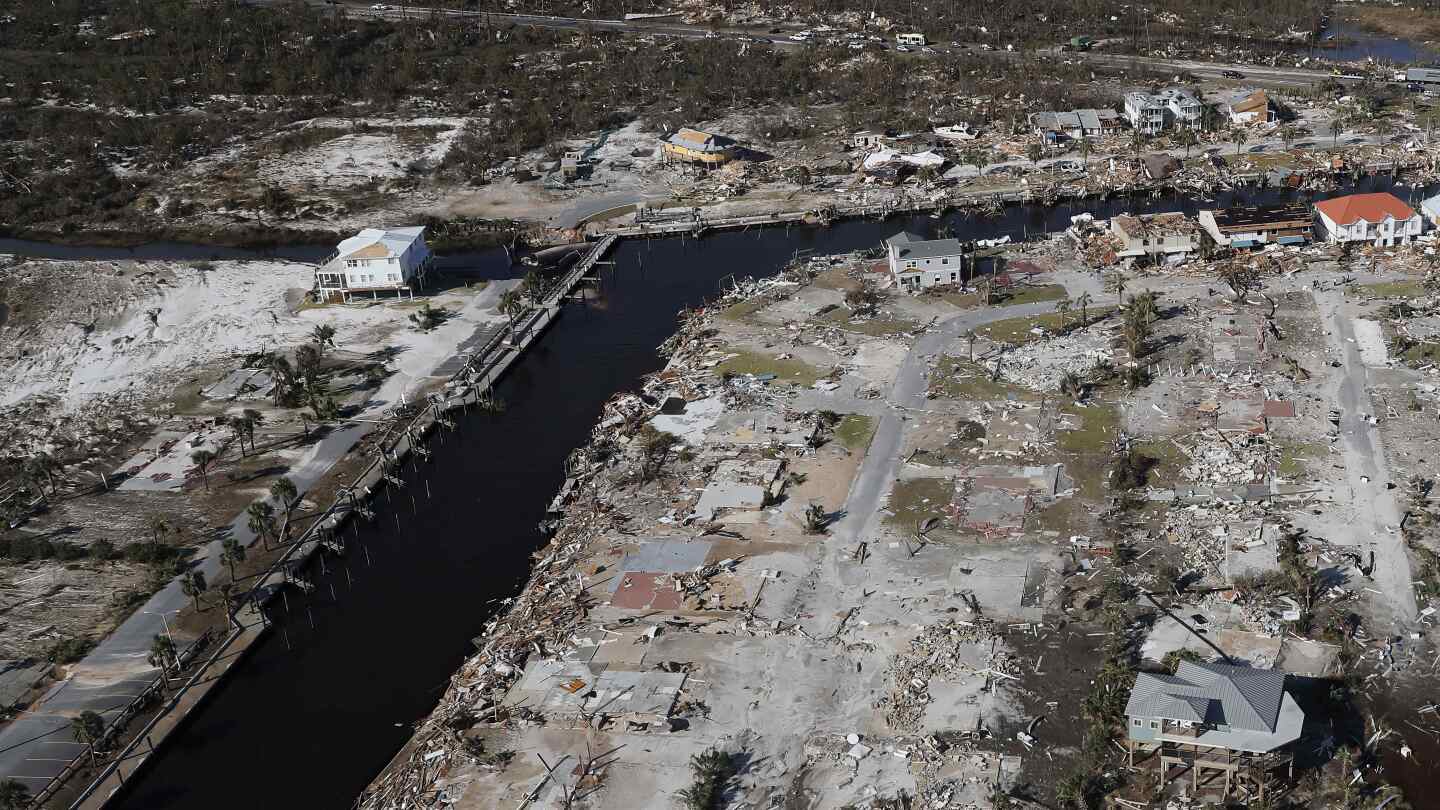When Hurricane Michael hit the Florida Panhandle five years ago, it left boats, cars and trucks piled up to the windows of Bonny Paulson’s home in the tiny coastal community of Mexico Beach, Florida, even though the house rests on pillars 14 feet above the ground. But Paulson’s home, with a rounded shape that looks something like a ship, shrugged off Category 5 winds that might otherwise have collapsed it.
“I wasn’t nervous at all,” Paulson said, recalling the warning to evacuate. Her house lost only a few shingles, with photos taken after the storm showing it standing whole amid the wreckage of almost all the surrounding homes.
Some developers are building homes like Paulson’s with an eye toward making them more resilient to the extreme weather that’s increasing with climate change, and friendlier to the environment at the same time. Solar panels, for example, installed so snugly that high winds can’t get underneath them, mean clean power that can survive a storm. Preserved wetlands and native vegetation that trap carbon in the ground and reduce flooding vulnerability, too. Recycled or advanced construction materials that reduce energy use as well as the need to make new material.
wow, almost as if building houses properly is a good idea. shocking.
Who would’ve thought that building them with hay and replacing them every few decades would be the least efficient?



